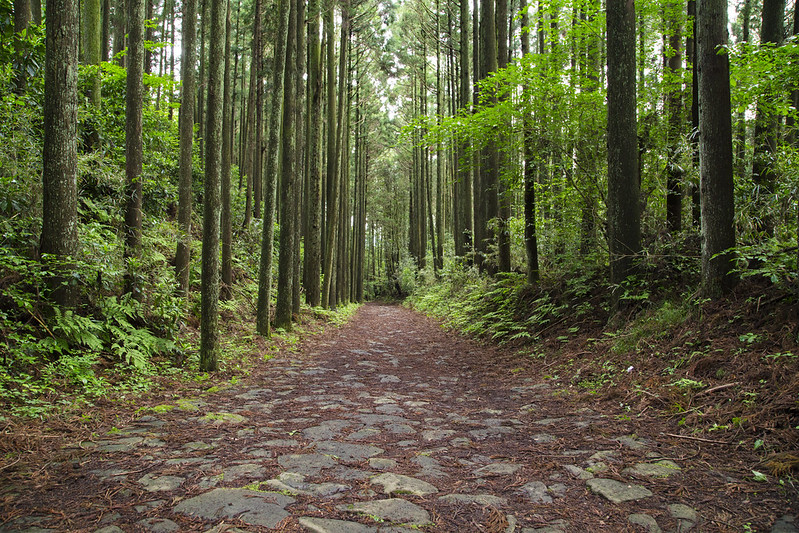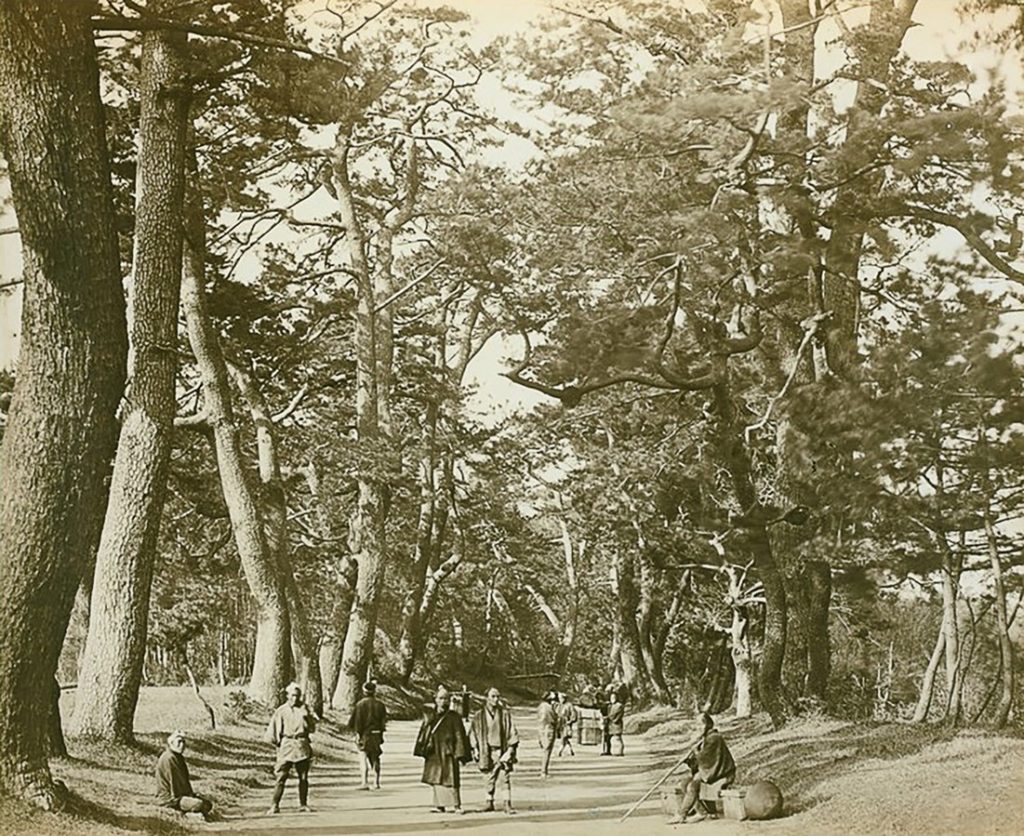
Travelling the Tōkaidō Road
Roads are an essential part of civilization. They help people travel and discover many different places. It is believed that roads or pathways came about from trails made by animals and man, such as the ancient Icknield Way in Southern England that stretches from Norfolk to Wiltshire. The world’s oldest paved road was said to be laid in Egypt around 2600 and 2200 BC. The iconic Route 66, considered to be one of the first highways ever built in the U.S., was initially a path used by many people who migrated to the west.
Photo of the Tōkaidō road (東海道, eastern sea route) by Felice Beato in 1865.
In Japan, there were five main routes. Tōkaidō (東海道, East Sea Road) was considered the most important route used during the Edo period. The Tōkaidō route connected Edo (now Tokyo) to Kyoto. People usually travelled this route on foot, and those of higher class used the kago, a type of palanquin.
Fifty-three rest posts were stationed along the Tōkaidō route, sanctioned by the Japanese government for amenities like horse stables and places for food and lodging. The post stations represent the 53 Buddhist saints that Sudhana visited to receive his teachings for enlightenment. Travel regulations required people to present travel permits at various checkpoints.
Checkpoint of the old Tokaido road in Hakone.
The Tōkaidō route is about 476 kilometers long. It took people two or three weeks to travel the whole stretch on foot. Many inns that lined the route and it was always an adventure to make one’s way through the famous path.
In modern day Japan, the Tōkaidō route can now be travelled in less than two hours from Tokyo to Nagoya and Osaka via Kyoto using the JR Tōkaidō Main Line, Tōkaidō Shinkansen, Tōmei and Meishin expressways.
Yet, there are still some remnants of the old Tōkaidō route. British painter Nigel Caple documented his travels along the road from 1998 to 2000. He made drawings of the stations along the Tōkaidō road, inspired by woodblock prints entitled The Fifty-three Stations of the Tōkaidō by Utagawa Hiroshige.
